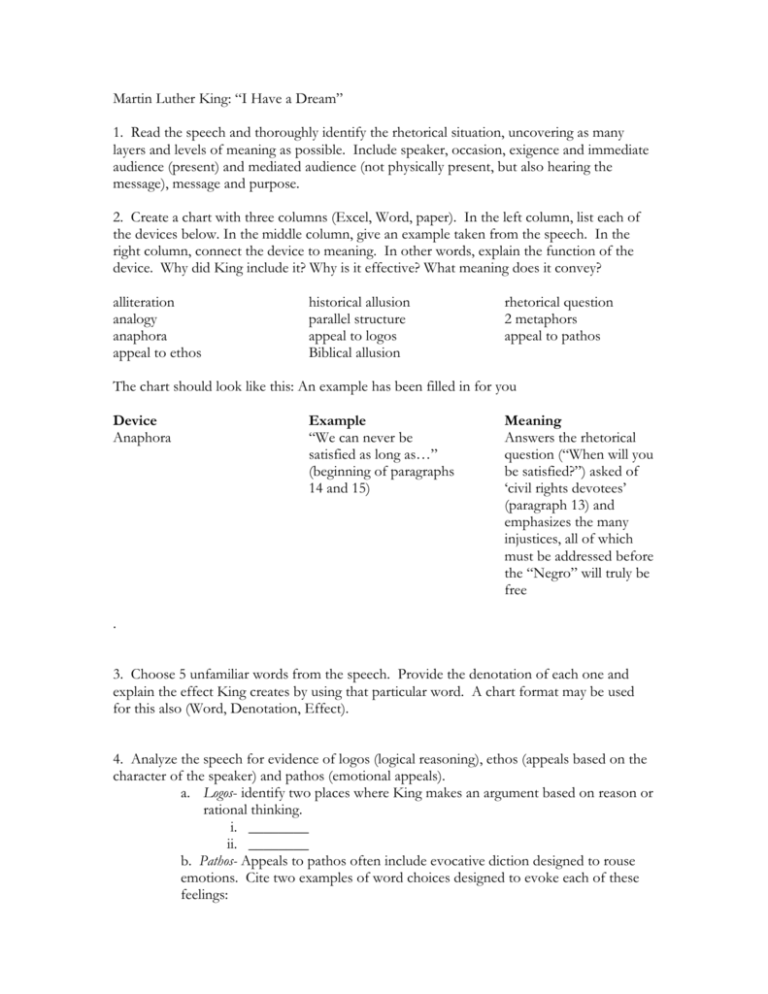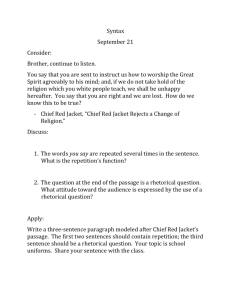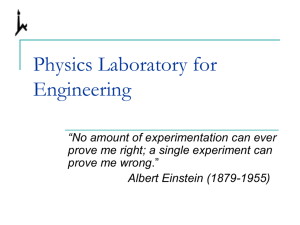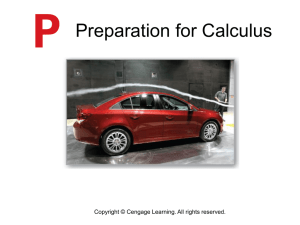Martin Luther King: “I Have a Dream” - Wiki-cik
advertisement

Martin Luther King: “I Have a Dream” 1. Read the speech and thoroughly identify the rhetorical situation, uncovering as many layers and levels of meaning as possible. Include speaker, occasion, exigence and immediate audience (present) and mediated audience (not physically present, but also hearing the message), message and purpose. 2. Create a chart with three columns (Excel, Word, paper). In the left column, list each of the devices below. In the middle column, give an example taken from the speech. In the right column, connect the device to meaning. In other words, explain the function of the device. Why did King include it? Why is it effective? What meaning does it convey? alliteration analogy anaphora appeal to ethos historical allusion parallel structure appeal to logos Biblical allusion rhetorical question 2 metaphors appeal to pathos The chart should look like this: An example has been filled in for you Device Anaphora Example “We can never be satisfied as long as…” (beginning of paragraphs 14 and 15) Meaning Answers the rhetorical question (“When will you be satisfied?”) asked of ‘civil rights devotees’ (paragraph 13) and emphasizes the many injustices, all of which must be addressed before the “Negro” will truly be free . 3. Choose 5 unfamiliar words from the speech. Provide the denotation of each one and explain the effect King creates by using that particular word. A chart format may be used for this also (Word, Denotation, Effect). 4. Analyze the speech for evidence of logos (logical reasoning), ethos (appeals based on the character of the speaker) and pathos (emotional appeals). a. Logos- identify two places where King makes an argument based on reason or rational thinking. i. ________ ii. ________ b. Pathos- Appeals to pathos often include evocative diction designed to rouse emotions. Cite two examples of word choices designed to evoke each of these feelings: i. sympathy for the plight of the “Negro” ii. indignation over the injustices the ‘black man has suffered’ iii. hopefulness for the future c. Ethos- give examples of each of these strategies: i. addressing his opposition’s views: (2 examples) ii. evidence of the speaker’s good will or good sense (2 examples) iii. Two authoritative documents to which King refers for support. 5. Look carefully for metaphors and extended metaphors and complete the activity below. (The length of the blank is in no way indicative of the expected answer length.) b. The subject of ___________ is compared to a lonely island. This is a fitting comparison because ___________ and a lonely island share these characteristics: (A) ____________________ and (B) ____________. c. The subject of _________ is compared to a desolate valley. This is a fitting comparison because ___________ and a desolate vally share these characteristics: (A) ____________________ and (B) ____________. d. The subject of _________ is compared to a tranquilizing drug. This is a fitting comparison because ___________ and a tranquilizing drug share these characteristics: (A) ____________________ and (B) ____________. e. The subject of _________ is compared to manacles. This is a fitting comparison because ___________ and manacles share these characteristics: (A) ____________________ and (B) ____________. f. Locate one more extended metaphor in the speech and fill in the blanks below. i. The subject of _________ is compared to _________. This is a fitting comparison because ___________ and ________ share these characteristics: (A) ____________________ and (B) ____________.











